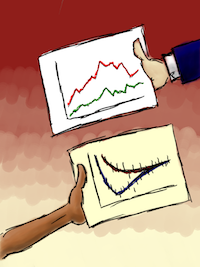Analyze¶

You need to still analyze your data to understand what happened and, hopefully, extract some meaningful information about the friction. How this is done in practice depends on how you decided to set up your simulations and what kind of data you extracted from them.
While setting up the simulations and checking what is happening during a run, it is very useful to use an atomic plotting tool such as:
- VMD - http://www.ks.uiuc.edu/Research/vmd/
- jmol - http://jmol.sourceforge.net
- ASH - https://github.com/thynnine/Ash
Beyond the atomic structure, there are some general ways of doing the data analysis:
- analyze the data directly in Python (you can plot with matplotlib)
- print the data in a file and feed it to an external analysis program (Matlab, Mathematica, Gnuplot, Grace, … whatever you like to use)
- print the data in a file and plot it, then analyze by hand (for large datasets this is not possible, but in a small project like this the amount of work is reasonable)
In any case, the most important thing is to try to figure out a valid way to quantify the friction. There are many ways to do this, and you should discuss your idea with the Support team before running the actual simulations.
Finally, you should calculate friction for the different values of the parameter you chose, and plot friction as a function of the variable. Some questions to consider:
- Does friction depend on the parameter?
- Is there a trend (e.g. linear growth or decline; does the slope mean something)?
- Can you estimate errors (confidence intervals) for your data?
- Does the result match your hypothesis?
- Can you explain the result?